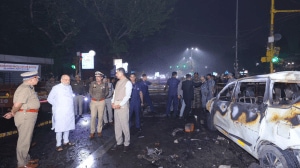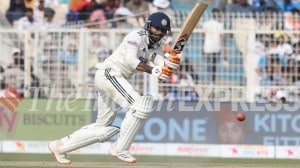Indias first embedded journalist set to fill a key gap in history
P R S Mani went with Indian troops sent to fight for British during WW II
An Australian historian,Prof Heather Goodall,wishing to look at cooperation between Australian,Indonesian and Indian seamen just when Indonesia and India were at the cusp of freedom from British rule,chanced upon fragments of work of an Indian radio journalist,P R S Mani. During 1945-46,Mani was embedded amongst Indian troops sent out as part of the British expeditions of World War II.
Prof Goodall knew only that Mani had filed regular dispatches about what the Indian troops actually went through as they fought,often against their will and instincts,in very difficult circumstances. Wanting more details,she did a search on the net,and coincidentally,hit upon his son Inderjeet Manis post asking if anyone would be interested in his late fathers papers.
 What started then as a brief email contact is now giving new insights into what this intrepid broadcast journalist,among Indias first embedded journalists,found as he travelled with Indian troops forced to fight on the side of the British in Burma,Indonesia,Benghazi,Italy and beyond at a time when passions in India ran high around independence.
What started then as a brief email contact is now giving new insights into what this intrepid broadcast journalist,among Indias first embedded journalists,found as he travelled with Indian troops forced to fight on the side of the British in Burma,Indonesia,Benghazi,Italy and beyond at a time when passions in India ran high around independence.Goodall is currently digitising the entire set of Manis dispatches and photographs with the help of Nehru Memorial Library and the National Archives of India and is planning to exhibit the same at the Archives in December.
The reports from lonely and miserable battlefields talk of Indian troops being forced to fight Indonesian or Burmese nationalists,forced to often massacre civilians to suppress anti-colonial struggles there,eg in the battle of Surabaya in 1945,where 20,000 civilians lost their lives.
The Indian troops were often nationalist,conflicted and desperate,yet did what they did,and Mani watched and recorded all this for history.
Aged 30 at the time,Mani was employed as an information officer with the British government of India. He made a copy of all the reports he sent,apart from keeping a parallel diary that told the real story of these soldiers,many of whom disappeared there or died,while others returned at a time when India was experiencing deep turmoil.
On his return,Mani resigned and joined as a journalist with the Free Press Journal. He then returned to Indonesia,at the time when Nehru too was on a visit. After India became free,Mani was given a diplomatic post in the country and advised the government on the complex conditions there.
The dispatches,photographs and files pertaining to his reports from the front were preserved first by Mani himself and then after his death by his Bangalore-based wife and two sons.
The elder son,US-based Inderjeet is very happy about his fathers work finally adding value to an understanding of the Indians with the British Army. As per Goodall,these stories of cooperation between Indian and Indonesian troops seem to have been ignored by all because they are transnational and do not fit into the narratives of emerging nations of either Indonesia or India. Such stories and that of P R S Mani is a good example have simply not been told.































